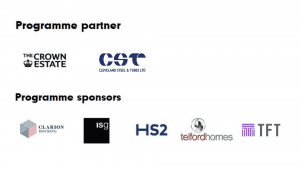The circular economy: inspiration or buzzword?

Is the circular economy something new, or is it just the latest buzz phrase? And how much does this matter when we start trying to apply its resource management principles in practice?
These questions were surprisingly prominent in a UK Green Building Council event I recently attended in Bristol. The session brought together several speakers to discuss the question ‘Do national government policy-makers have the main role in achieving a shift towards a Circular Economy for the built environment?’
I’m a relative newcomer to the environment sector, and the ideas embodied in the circular economy concept were new to me when I became Eunomia’s first PR and Marketing Manager in 2016. I found the concept intuitive: it’s all about keeping resources within closed loop systems, preventing waste and reusing or repurposing materials. It’s pretty clear when explained through the now-familiar loop diagram.

Hitting a brick wall
Since then, the term has been in ever-wider circulation, with the European Commission pressing ahead with its Circular Economy Package. Now UKGBC has launched its own Circular Economy Programme, of which the Bristol event was a part. The degree of scepticism about the circular economy concept that emerged from the audience came as a surprise.
Was it perhaps that the circular economy poses particular problems when applied to the built environment – at least, in the absence of government action. My colleague Camilla Durrant argued that it wasn’t necessary to wait for national-level action. Her experience producing a Circular Economy Zero Waste Strategy for Derry City and Strabane District council led her to believe that regional loops are relatively easy and that local authorities can drive value for money and environmental benefits through green public procurement, including in the built environment.
Camilla’s fellow panellist Tom Wood of consultants WSP argued that, while government action is very important to move towards a circular economy, business also has a critical role and can achieve significant sustainability and financial benefits by modifying existing processes/products or identifying new ones.
Building a circular economy
The event ended with a vote: the majority of attendees said that national policy makers have the main role. I can understand that view, although I suspect that the vote was partly a reflection of scepticism in the room regarding the value of the concept. However, it seems to me that action in the construction sector is possible without legislation; the rewards are too great, and challenges too large, to wait for national legislation when the direction of travel is already clear.
Maybe developers currently have little interest in designing for durability and reuse – but does that have to be the case? In other sectors with quite durable products, such as the car industry, leasing models where the producer retains ownership of the product are gaining in popularity. If developers retain ownership of their buildings, they have an interest in designing for durability, repairability and recycling. Renting buildings is already commonplace, so perhaps the cultural step towards producer responsibility might not be so great as in other areas.
It just needs developers and property managers to understand the opportunities – something work like Camilla’s can help with. If implemented, the Derry & Strabane circular economy strategy has the potential to save the council up to £3M a year; if developers knew the savings they could make, wouldn’t they change their practices regardless of legislation?
In my work communicating Eunomia’s projects and ideas, one of the challenges is finding language that accurately conveys complex concepts. I’ve found that ‘circular economy’ is one term that resonates, whether or not its message is radically different from earlier ideas like the waste hierarchy. It implies that environmental benefits don’t have to come at the expense of economic ones.
Stakeholders in the built environment already rely on powerful visuals to communicate with one another, and if the clear visual imagery of the circular economy is shared throughout the sector, it could highlight the benefits it offers to those willing to adapt their business models.
Caroline Campbell is a PR and Marketing Manager at Eunomia. You can follow them on Twitter here.
You can follow the UK Green Building Council on Twitter, LinkedIn, and Facebook.

Related
Storms, climate change and how we make our cities resilient

Sustainable Construction for the Sustainable Development Goals

Fixing the Competency Gap: Moving Beyond Qualifications in Domestic Retrofit

UKGBC Members visit Coal House in Cardiff

